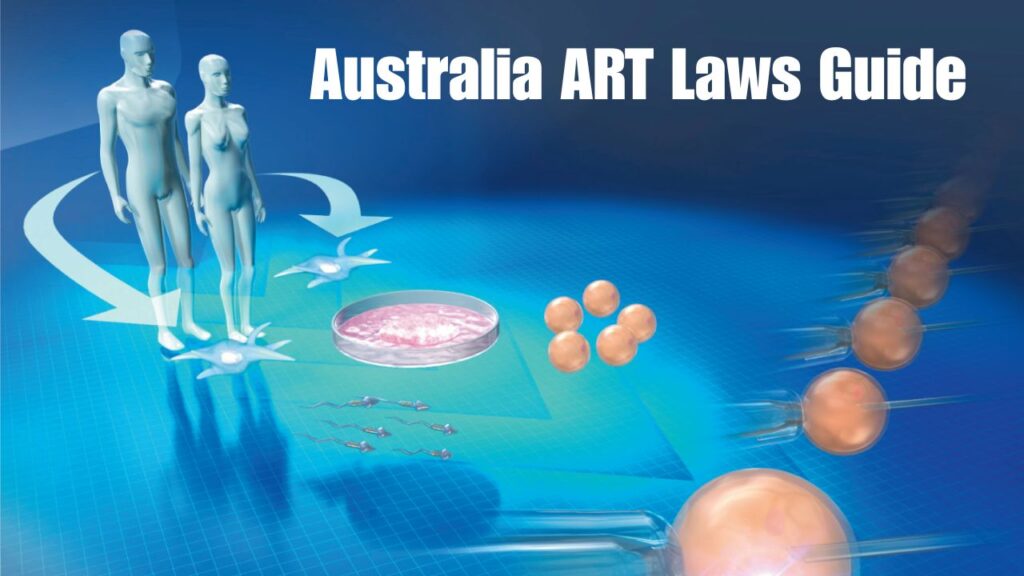Assisted Reproductive Technology – Assisted Reproductive Technology (ART) laws in Australia are designed to protect the rights of donors, intended parents, and donor-conceived individuals. These laws govern practices such as sperm, egg, and embryo donation, surrogacy, and fertility treatments. Each state and territory has specific legislation regulating ART clinics and procedures, ensuring ethical conduct and transparent record-keeping. This comprehensive guide explains how ART laws work in Australia, the responsibilities of fertility clinics, and how donor-conceived people can access vital genetic information under national and regional frameworks.

Understanding Assisted Reproductive Technology Laws in Australia
Australia’s Assisted Reproductive Technology laws are structured to balance the interests of all parties involved in fertility treatments. These laws regulate how donors are screened, how records are stored, and how offspring can access identifying information about donors. For example, in Victoria, the Assisted Reproductive Treatment Act 2008 ensures that donor-conceived children can know their biological origins. Across the country, ART clinics must comply with licensing requirements and uphold strict ethical guidelines set by the National Health and Medical Research Council (NHMRC).
State and Territory Variations in ART Regulations
ART laws vary between Australian states and territories, creating a complex legal landscape. While Victoria, New South Wales, and Western Australia have detailed ART legislation, other jurisdictions follow general health laws and NHMRC guidelines. For instance, Victoria mandates donor identity disclosure, while Queensland allows anonymous donations under specific conditions. Understanding these differences helps intended parents and donors make informed decisions. These legal distinctions also ensure donor-conceived individuals have fair access to records and heritage information, regardless of their place of birth.
 Building Connections – How Donor Conceived People Find Family Through DNA Testing & Support Groups
Building Connections – How Donor Conceived People Find Family Through DNA Testing & Support Groups
| State/Territory | Governing Law/Authority | Donor Identity Access | Clinic Licensing Required | Key Focus |
|---|---|---|---|---|
| Victoria | Assisted Reproductive Treatment Act 2008 | Mandatory Disclosure | Yes | Donor Transparency |
| New South Wales | Assisted Reproductive Technology Act 2007 | Permitted Access | Yes | Ethical Regulation |
| Queensland | Health (Drugs and Poisons) Regulation | Conditional | No | Guideline Based |
| Western Australia | Human Reproductive Technology Act 1991 | Allowed | Yes | Ethical Oversight |
| South Australia | Reproductive Technology Act 1988 | Permitted | Yes | Clinic Compliance |
Rights of Donor-Conceived Individuals in Australia
Australian ART laws emphasize the rights of donor-conceived individuals to know their biological origins. Many states provide donor registers where donor-conceived adults can apply for identifying or non-identifying information. This legal recognition promotes emotional well-being and supports identity formation. In some states, donors can also access limited information about offspring, but only under consent-based frameworks. These evolving laws aim to ensure transparency, ethical responsibility, and emotional support for everyone affected by assisted reproduction.
Ethical Standards and Future Reforms in ART
The ethical framework of Australia’s ART laws continues to evolve with advances in reproductive science. Lawmakers are considering national uniformity to address inconsistencies between states. Emerging topics include cross-border surrogacy, embryo storage limits, and genetic data sharing. Fertility specialists and policymakers are also emphasizing the need for psychological counselling and informed consent for all participants. The future of ART legislation in Australia lies in achieving a balance between reproductive freedom, transparency, and protection of donor-conceived individuals’ rights.
Frequently Asked Questions (FAQs)
1. Is surrogacy legal under ART laws in Australia?
Yes, surrogacy is legal but regulated differently across states, with commercial surrogacy banned nationwide.
2. Can donor-conceived people access donor information?
In most states, donor-conceived individuals can access identifying information once they reach 18 years of age.
3. Are ART clinics required to hold licenses?
Yes, most states require ART clinics to be licensed and follow NHMRC ethical standards.
4. Is anonymous sperm or egg donation allowed in Australia?
Anonymous donations are no longer allowed in most Australian states to protect donor-conceived rights.

